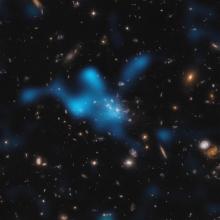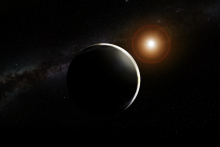Listen to today's episode of StarDate on the web the same day it airs in high-quality streaming audio without any extra ads or announcements. Choose a $8 one-month pass, or listen every day for a year for just $30.
You are here
Radio Survey
When astronomers look at the universe, stuff often gets in the way — from clouds to airplanes to asteroids. And the operators of an extensive new survey of the sky have something else to avoid: the satellites that broadcast Sirius-XM radio.
The VLA Sky Survey is using the Very Large Array — a collection of 27 radio antennas in New Mexico — to make the most detailed radio maps of the sky ever. But the satellites broadcast at some of the same frequencies the VLA is studying. In fact, the satellites produce so much energy that they can swamp the observations. So operators have to be sure to aim away from the satellites.
Over the next few years, the VLA survey will scan the entire sky three times. The radio telescope will stare at half of the sky at a time — more than a month of observations per scan. That will reveal objects that are fainter and farther away than ever before — millions of targets in all.
The list will include exploding stars and the mergers of stellar corpses known as neutron stars. The survey also will examine jets of particles blasting away from the black holes at the hearts of many galaxies. The jets can zap clouds of gas that might form new stars, shutting down the process of starbirth.
The survey also will map magnetic fields in space and peer through clouds of dust in our own galaxy to help map its structure — all while avoiding satellites and other obstacles in the sky.
Script by Damond Benningfield






